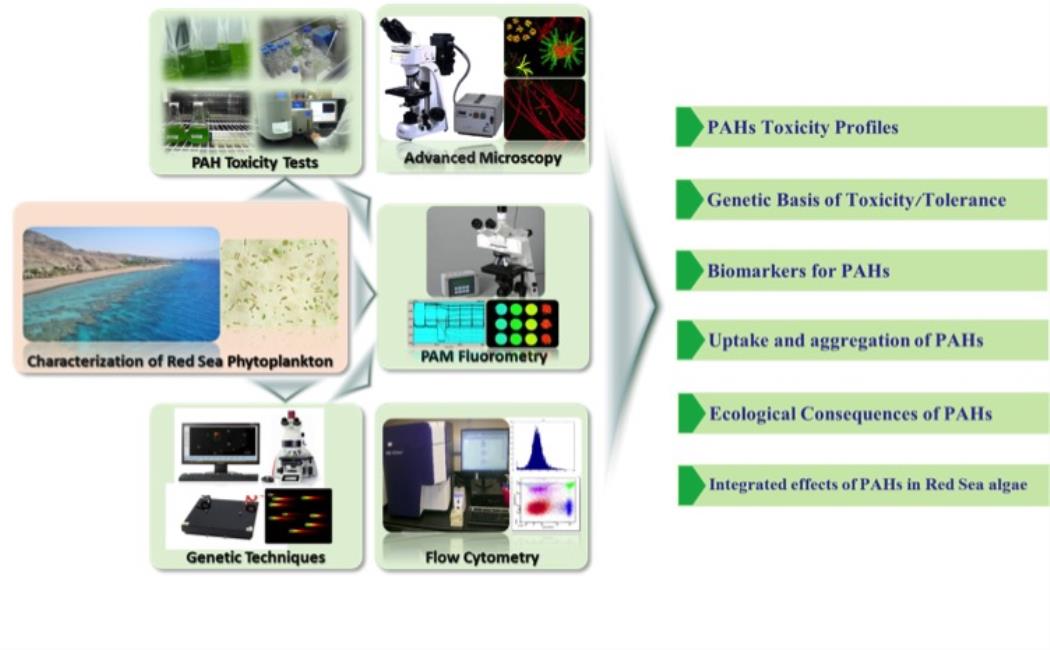
Major portion of the data is obtained through cruises and field studies, involving toxicity tests on board. Adsorption of PAHs in to phytoplankton is studied in laboratory incubation studies using epifluorescence microscopy and UV-excitation flow cytometry. PAM fluorometry has been used as a non-invasive technique to assess the photosystem function and overall photosystem II photochemistry. Genetic basis of the ecotoxicological response is anticipated to investigate in the future.
2. Bioaccumulation and trophic transfer of PAHs in tropical marine ecosystemThis study will evaluate PAHs adsorption by phytoplankton and subsequent transfer to higher trophic levels using carbon stable isotope ratios, in collaboration with Australian Institute of Marine Science (AIMS). This involves Isochrysis sp as prey and the coral juveniles (Acropora sp) as predators. Novel approaches to visualize the presence of PAHs in planktonic organisms will be employed along with sophisticated cavity ring down mass spectrometry for tracing PAHs in food webs.
Our hypothesis is that PAHs incorporation onto phytoplankton, that contributes a large surface for adhesion of these compounds, and subsequent ingestion is likely to be the main pathway for PAH incorporation onto filter feeding organisms, including corals in tropical marine ecosystem. Other principal goals are to investigate whether food web amplification affects the toxicity of oil and PAHs to corals and how microalgae and suspended sediments influence toxicity of oil/PAHs to corals.
3. Impact of atmospheric particulate heavy metal input in Red sea phytoplankton
Scientists at the Red Sea Research center have been investigating the concentration of heavy metals in atmospheric dust fallout in the Red Sea. It is anticipated that the influx of toxic metals of anthropogenic origin into the sea is attributed to dust storm deposition and atmospheric pollution. In order to predict their impacts on phytoplankton, we are conducting dust incubation experiments with natural marine communities to assess their response in terms of growth, photosynthesis, pigmentation and community structure. Chemical characterization of the dust samples will be done in parallel to justify the positive or negative responses. Our hypothesis is that supplementing seawater with dust particulates would lead to measurable changes in surface water nutrient composition, subsequently, shifts in the marine microbial community.